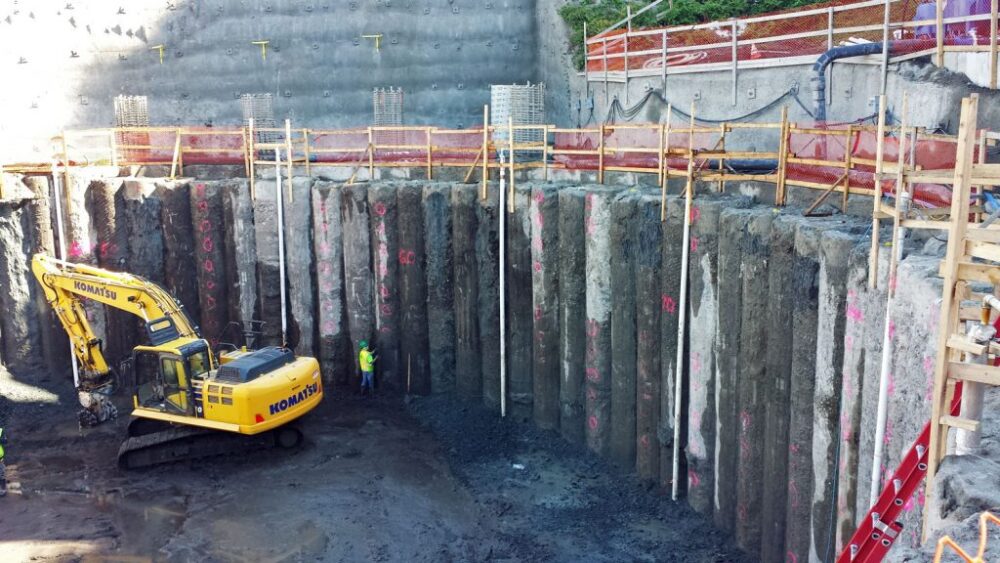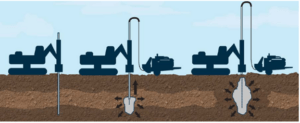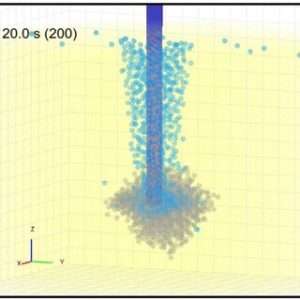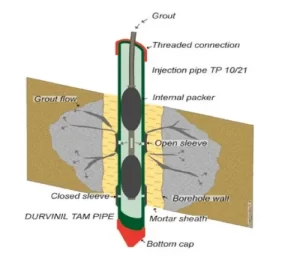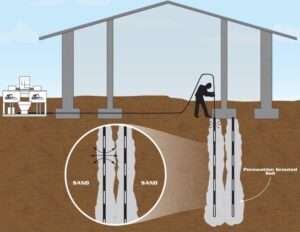In regions with difficult ground conditions, micropiling is a specialized foundation technique used in building to give buildings and structures structural stability. By installing small-diameter piles typically between 100 and 300 mm—into the ground, this novel technique shifts the weight of the building to layers of rock or deeper, more stable soil. The complexities of micropiling, its uses, and the many benefits it provides for contemporary construction methods are explored in this article.
1.Micropiling Construction Method:
To ascertain the composition and load-bearing capacity of the ground, a site survey and soil analysis are the first steps in the micropiling process. Engineers create a specialized micropile solution based on the results, suited to the project’s particular needs. The following steps are usually involved in the construction process:
Drilling:
To drill holes into the earth to the necessary depth, specialized drilling equipment, such as rotary rigs or percussive drills, is utilized.
Installation:
Rebar, or high-strength steel reinforcement, is placed into the drilled holes. A solid column is then formed around the rebar by forcing grout, a mixture of cement, water, and additives, into the hole under pressure.
Testing:
To guarantee the structural integrity and load-bearing capacity of the micropiles, quality control procedures, such as integrity testing and load testing, are carried out.
Connection:
The micropiles are fastened to the structure’s foundation by welding, bolting, or anchoring them in place once they have been installed and tested.
Applications of Micropiling:
Micropiling is widely used in building situations where conventional foundation techniques are inadequate or unfeasible. Typical uses for them include:
A.Urban Environments:
Micropiling provides a compact and effective way to support structures without disturbing nearby buildings or infrastructure in densely populated urban locations with limited space and difficult soil conditions.
Slope Stabilization:
In steep terrain, micropiles can be positioned horizontally or angled to stabilize slopes and stop soil erosion and landslides.
Retrofitting and Rehabilitation:
In historical buildings or structures with foundation settlement or structural distress, micropiles are frequently used to reinforce and stabilize the existing structure.
Infrastructure Projects: When deep foundation support is needed or when soil conditions are poor, micropiling is frequently used in the construction of bridges, highways, retaining walls, and other infrastructure projects.
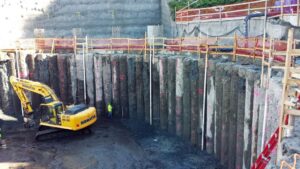
3.Advantages of Micropiling: Micropiling is a preferred option for many building projects due to its numerous clear advantages over conventional foundation techniques. Among the principal benefits are:
Versatility:
Micropiling is appropriate for a broad range of construction applications because it can be modified to fit different soil types, such as soft clay, loose sand, and bedrock.
- Minimal Site Disturbance: Micropiling causes less noise and vibration and calls for less equipment than traditional deep foundation techniques like driven piles or drilled shafts, which reduces disturbance to the surrounding area and other structures.
- Cost-effectiveness: In urban settings with limited building space and restricted access, micropiling may prove to be a more economical solution than standard foundation methods, even with its sophisticated technology and specialized equipment.
- Quick Installation: Micropiling can be put up fast and effectively, which speeds up construction schedules and minimizes downtime. This is especially helpful for projects that have a tight deadline.
- High Load Capacity: Because of their deep embedment into stable soil or rock layers and high-strength materials, micropiles can withstand substantial loads despite their small diameter, offering dependable structural support for infrastructure and structures.
- Environmental Sustainability: Compared to traditional methods, which may necessitate significant earthmoving and ecosystem disruption, micropiling produces little excavation and disturbance of the natural landscape, making it an environmentally friendly foundation option.
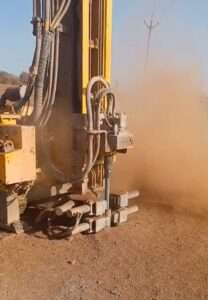
In conclusion, micropiling is a flexible and effective foundation technique that has several benefits for use in contemporary building methods. Micropiling offers a dependable and affordable way to support structures in difficult ground conditions while reducing environmental effects and optimizing construction efficiency, from urban skyscrapers to distant infrastructure projects. Micropiling is anticipated to have a major influence on how infrastructure and construction are developed globally in the future as technology develops.


